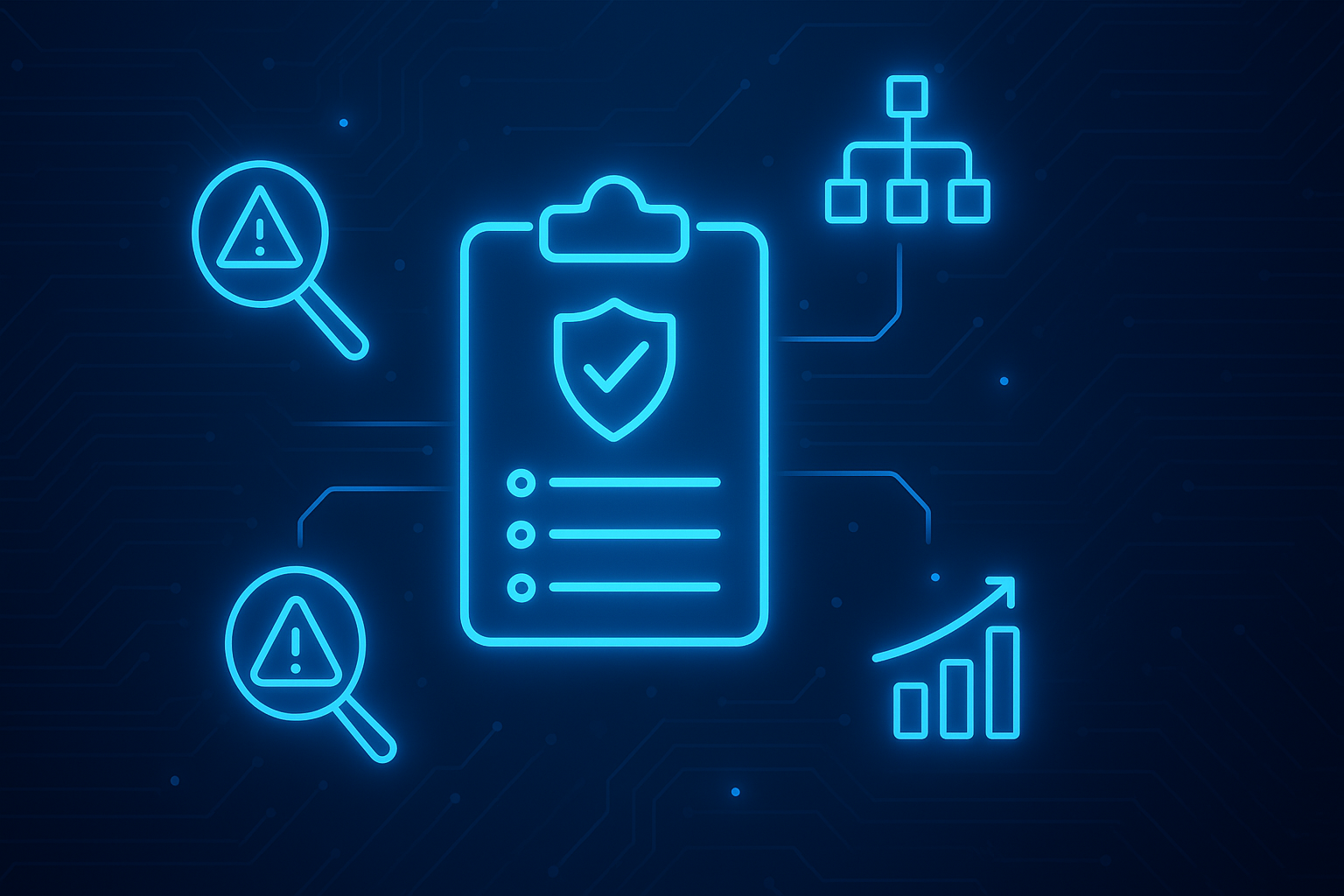Developing a cyber risk management approach can be challenging for many organizations, especially those building their cyber infrastructure from scratch. Yes, you can add measures and consider applications as you grow and learn, but that opens the door for cyber-attacks and data breaches. Even as a small business, the risk of a breach can have far-reaching consequences.
Instead, your organization can base its program on the NIST Cybersecurity Framework (CSF). The NIST CSF is a comprehensive approach to cyber risk management and is regularly updated to include feedback from industry leaders, threat trends, and changes in regulation and technology. While the framework has many facets, security teams do not need to implement all framework parts at once. Organizations can scale their program alongside the NIST CSF requirements - allowing security teams to implement the framework as their security program matures.
The NIST CSF is a voluntary framework that can be implemented by businesses of all sizes, regardless of industry. Although, a great deal of emphasis is placed on organizations in critical infrastructure services to benchmark against the NIST CSF since it is regarded as the gold standard for cybersecurity.
Your organization should benchmark its program and align its risk management strategy to the NIST CSF for several reasons, which we will discuss below.
Scale Your Cyber Risk Program with the NIST CSF
Organized and Scalable
Suppose you are conflicted about where to start with cyber risk management. In that case, the NIST CSF provides an organized approach by dividing the framework into five main functions: Identify, Protect, Detect, Respond, and Recover. Each subset contains several categories addressing cybersecurity measures related to these actions. The sheer volume of measures it lists underscores just how comprehensive this approach is.
When it comes to a cyber breach, there are three phases: prior, during, and post-attack. The five core functions help security teams evaluate whether or not they have adequate measures in place for each of these phases should an attack occur. The NIST CSF assists organizations in determining how much they do proactively to prevent cybersecurity events while still having comprehensive detection and response plans. This approach ensures that the security team is supporting business continuity and growth.
Risk-Based Approach
NIST based the CSF on a risk management approach that helps organizations identify, assess, and prioritize cybersecurity risks based on their potential impact. This approach can help organizations focus their resources on the most critical areas of their cybersecurity program. It includes measures that coincide with proactively managing risk.
Identify: The first function involves identifying the critical assets that an organization must protect and the potential cybersecurity threats that could affect them. This function also includes identifying the organization's cybersecurity risk management policies, procedures, and processes.
Protect: The second function involves implementing measures to protect the organization's assets from cybersecurity threats. This function includes access control, awareness training, and data security standards.
Detect: The third function involves implementing measures to detect cybersecurity incidents immediately. This function includes continuous monitoring and anomaly detection. The CyberStrong platform advances continuous monitoring by evaluating security posture at the control level with Continuous Control Automation.
Respond: The fourth function involves developing and implementing a plan to respond to cyber incidents if and when they occur. This function includes incident response planning, communication, and recovery planning.
Recover: The final function focuses on developing and implementing measures to recover from cybersecurity incidents and restore normal operations as quickly as possible. This function includes business continuity planning and disaster recovery planning.
By providing a structured framework for managing cybersecurity risks, the CSF helps organizations prioritize their cybersecurity activities based on the potential impact of cybersecurity incidents. This approach allows organizations to focus their resources on the most critical areas of their cybersecurity program, which supports a risk-based approach to cybersecurity.
Flexibility
More often than not, organizations are subject to more than one framework or standard. Based on the industry, trade regulations, and geographic location, many standards exist to comply with. The NIST CSF is customizable to the needs of any organization and was developed to be used in tandem with other cybersecurity standards and frameworks. Security professionals can implement the NIST CSF alongside ISO 27001, GDPR, CMMC, HIPAA, and different industry standards.
Take a Risk-Based Approach with the NIST CSF
Your organization should consider using the NIST Cybersecurity Framework because it provides a structured, flexible, and comprehensive approach to managing cybersecurity risks. The structured approach will help you develop, implement, and improve your cybersecurity posture systematically and consistently. NIST designed the CSF to be flexible and tailored to an organization's specific needs and risk profile. You can use the CSF to develop a customized cybersecurity program aligned with your business objectives and risk tolerance.
Building a cyber risk management program can be daunting, but it doesn't have to be with the NIST CSF and CyberStrong. CyberSaint developed CyberStrong with the NIST CSF at its core and will streamline compliance with NIST CSF and other frameworks using its advanced automation capabilities. Learn more about these advanced functions in a demo.





.png)
.png)
.png)
%201.png)
.png)




